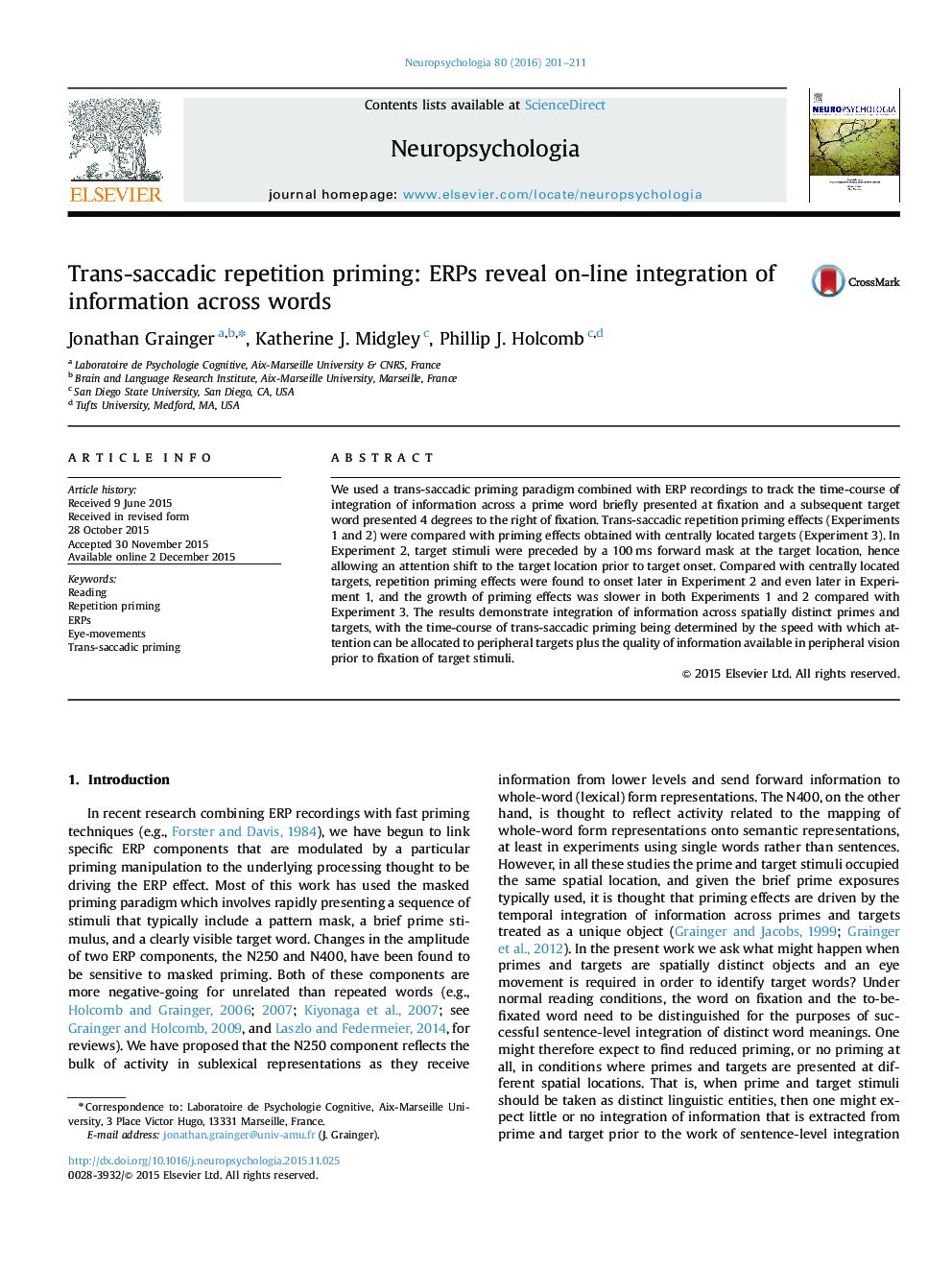| Article ID | Journal | Published Year | Pages | File Type |
|---|---|---|---|---|
| 7319595 | Neuropsychologia | 2016 | 11 Pages |
Abstract
We used a trans-saccadic priming paradigm combined with ERP recordings to track the time-course of integration of information across a prime word briefly presented at fixation and a subsequent target word presented 4 degrees to the right of fixation. Trans-saccadic repetition priming effects (Experiments 1 and 2) were compared with priming effects obtained with centrally located targets (Experiment 3). In Experiment 2, target stimuli were preceded by a 100Â ms forward mask at the target location, hence allowing an attention shift to the target location prior to target onset. Compared with centrally located targets, repetition priming effects were found to onset later in Experiment 2 and even later in Experiment 1, and the growth of priming effects was slower in both Experiments 1 and 2 compared with Experiment 3. The results demonstrate integration of information across spatially distinct primes and targets, with the time-course of trans-saccadic priming being determined by the speed with which attention can be allocated to peripheral targets plus the quality of information available in peripheral vision prior to fixation of target stimuli.
Related Topics
Life Sciences
Neuroscience
Behavioral Neuroscience
Authors
Jonathan Grainger, Katherine J. Midgley, Phillip J. Holcomb,
